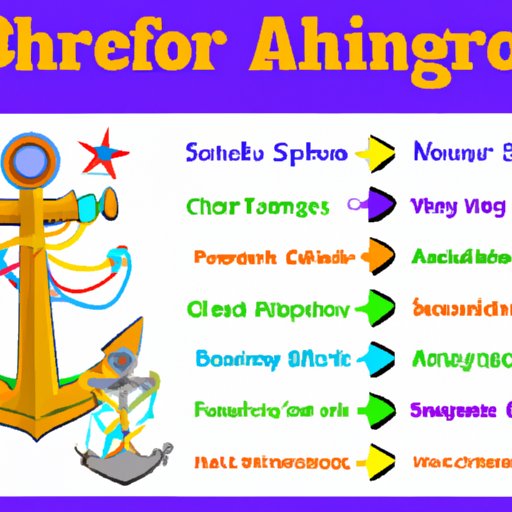Introduction
Anchor charts are visual tools used in the classroom to help students understand concepts and remember important information. Often large enough to be seen by the entire class, they can be hung up on the wall or displayed on a whiteboard. Anchor charts are often colorful and include diagrams, pictures, and text. They are designed to teach students a specific concept or skill and can help them recall what they have learned later on.

Benefits of Using Anchor Charts in the Classroom
There are many benefits to using anchor charts in the classroom. They can help make abstract topics more concrete for students, and they provide a visual reference that students can return to when needed. Anchor charts can also serve as a reminder of important concepts and skills, helping students retain the information. Additionally, anchor charts can be used to scaffold learning and encourage student engagement and collaboration. Finally, anchor charts can be used to support differentiated instruction and provide visual supports for English language learners.
Types of Anchor Charts
There are many different types of anchor charts that can be used in the classroom. Some examples include vocabulary charts, timeline charts, comparison charts, cause and effect charts, problem and solution charts, and process charts. It’s important to choose the right type of anchor chart for the topic you are teaching. For example, if you are teaching a lesson on the scientific method, a process chart would be the most appropriate type of anchor chart.

Tips for Designing Effective Anchor Charts
When designing an anchor chart, it’s important to keep in mind that the goal is to help students understand and remember the material. To ensure that your anchor chart is effective, here are a few tips to keep in mind:
- Choose a relevant and engaging topic.
- Include visuals such as diagrams, images, and illustrations.
- Keep the text simple and concise.
- Use bright colors and fonts that are easy to read.
- Include key points and definitions.
Examples of Successful Anchor Charts
Here are some examples of successful anchor charts that have been used in the classroom:
- A timeline chart with pictures and dates to illustrate the history of the civil rights movement.
- A comparison chart with images of different animals and their characteristics.
- A cause and effect chart with arrows connecting causes to effects.
- A problem and solution chart outlining various environmental issues and potential solutions.
- A process chart illustrating the steps involved in the scientific method.
Creating an Anchor Chart
Now that you know the basics of anchor charts, let’s look at how to create one. Here is a step-by-step guide for writing an anchor chart:
- Choose a relevant and engaging topic.
- Gather relevant materials such as images, diagrams, and text.
- Create a rough draft of the anchor chart.
- Make sure to use bright colors and fonts that are easy to read.
- Include key points and definitions.
- Check for accuracy and make any necessary changes.
- Display the anchor chart in the classroom.
Conclusion
Anchor charts are a great way to help students understand and remember important concepts and skills. They can also help engage students and promote collaboration. With these tips, examples, and a step-by-step guide, you should now have the knowledge and confidence to create effective anchor charts in your classroom.
(Note: Is this article not meeting your expectations? Do you have knowledge or insights to share? Unlock new opportunities and expand your reach by joining our authors team. Click Registration to join us and share your expertise with our readers.)
